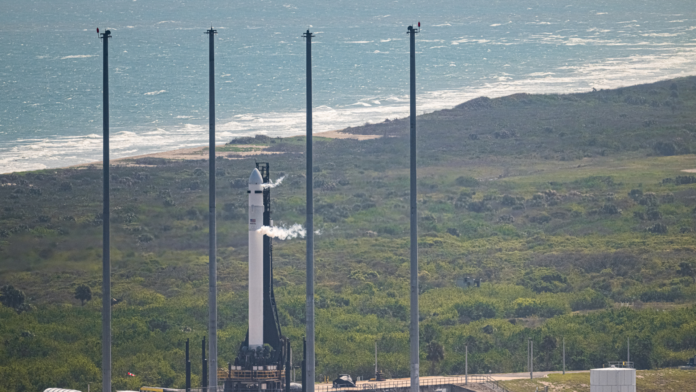Relativity Space’s Terran 1 3D-printed rocket failed to launch after two attempts on Saturday.
Terran I had been due to launch on Wednesday this week but was scrubbed due to oxygen temperatures in the rocket’s second stage landing outside of normal limits.
In a tweet, Relativity Space said it had pushed back its initial launch attempt at 1:45 PM ET today by an hour to 2:45PM ET because of “upper-level wind violations.”
Terran I had been due to launch on Wednesday this week but was scrubbed due to oxygen temperatures in the rocket’s second stage landing outside of normal limits.
As Engadget reports(Opens in a new window), a boat entering the spacecraft’s range today interrupted the countdown. The countdown resumed but this was short-lived. The company aborted the launch when Terran 1’s nine first-stage Aeon engines cut off immediately after firing up. Relativity Space described that engine failure as a “launch commit criteria violation” and pushed the launch back to 4 PM ET.
In tweets(Opens in a new window), the space company said that a “corner case in the stage separation automation properly aborted at T. 5 seconds.” In response, the Relativity Space team pushed an update to the vehicle automation and successfully recycled the vehicle before the second attempt.
This final launch attempt was aborted too, however, and was called before the 3D-printed rocket’s engines were ignited. The space company, which said that the vehicle was “healthy”, said on Twitter that there had been an “automated abort on stage 2 fuel pressure, which was only one PSI low.” This had happened at T-45 seconds, the company said.
Recommended by Our Editors
Relativity Space further tweeted(Opens in a new window): “The team went HARD today and we intend to do so during our next attempt. More to come on the new launch date and window soon.”
Relativity Space(Opens in a new window) was founded by Tim Ellis and Jordan Noone in a bid to show that space launch costs could be significantly lowered by using 3D-printing techniques to manufacture rocket parts. 85% of the Terran 1’s mass as well its entire structure is 3D-printed. It also features 10 first and second-stage engines that are 3D-printed, while Ellis and Noone plan to manufacture a follow-up rocket that owes 95% of its mass to 3D-printed material.
Get Our Best Stories!
Sign up for What’s New Now to get our top stories delivered to your inbox every morning.
This newsletter may contain advertising, deals, or affiliate links. Subscribing to a newsletter indicates your consent to our Terms of Use and Privacy Policy. You may unsubscribe from the newsletters at any time.
Hits: 0
















